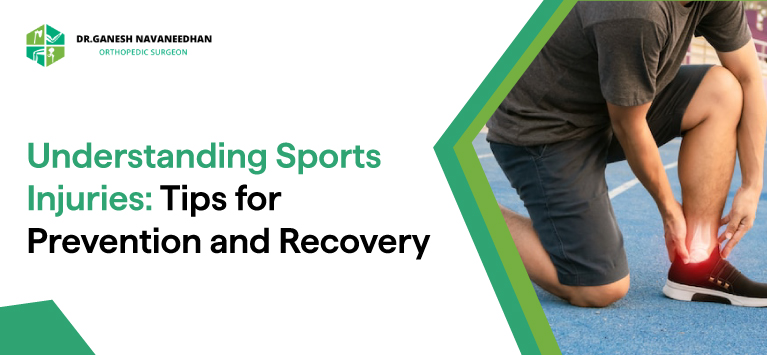- +91 62384 78716 +91 99475 78797
-
Sasthamangalam, Trivandrum
Sasthamangalam, Trivandrum

Sports injuries or injuries occur during exercise, giving rise to different types of muscle and joint injuries. Tendon or muscle injuries, knee or ankle sprains, and bone fractures are common conditions. Knowing the prevention measures and the treatment of injuries is essential to minimize the risk of discomfort and pain after sporting activity.
Among the causes of sports injuries, the most common is usually the following:
In training, getting injured is easy, and in any sport. In addition to extreme sports like snowboarding and skiing, the most dangerous areas are football, rugby, hockey, and figure skating. But you can get bruised or torn ligaments even in rhythmic gymnastics classes or while playing tennis.
The most common types are dislocations and sprains. The knees and elbows are usually affected, but sometimes athletes injure the feet, hands, and ankles.
The most common injuries include:
These injuries occur because the athlete performs the exercises incorrectly, makes sudden movements, neglects the warm-up, and instead immediately proceeds to increased loads, including lifting sports equipment.
While it’s true that completely avoiding the risk of injury in sports isn’t feasible, you can follow several practices and tips to minimize the chance of suffering pain and discomfort after exercising. These are some of the indications that you must take into account to prevent sports injuries.
It is essential to do a good warm-up so that the body warms up gradually. In fact, moving from inactivity to the practice of exercises of greater or lesser intensity greatly increases the risk of suffering injuries.
As told in the previous point, you should not start training directly without going through the warm-up phase. Well, the same thing happens in reverse. In other words, we shouldn’t go from strenuous physical activity to suddenly stopping. The ideal, therefore, is to gradually return to calm in the last few minutes of training, helping us with passive stretching.
It is just as important to warm up before training as it is to calm down afterwards. This allows the muscles to calm down and obviously greatly prevents the occurrence of possible injuries.
Exercise is a fundamental pillar of having a healthy lifestyle, but as you know, nutrition and hydration are the perfect combination to gain health and quality of life. Therefore, don’t forget to drink plenty of water and meet your nutritional needs.
Treatment for a sports injury will depend on the level of severity of the injury. For example, complex fractures and a torn meniscus may require surgery. In less severe cases, treatment options include a course of drug therapy (painkillers and anti-inflammatory drugs, drugs for tissue regeneration and bone strengthening). At the end of the course, a program for the recovery of athletes after injuries begins, which can take a long period of time.
Methods of physical rehabilitation for injuries depend on the degree of damage to muscles and bones. There are cases when the recovery process allows you to completely return to normal life and the previous pace of training. But there are also injuries that lead to disability. In this case, the recovery program for athletes after injuries is aimed at adapting people to new living conditions. Then specialists work not only with the physical side of the problem but also with the psychological one. The help of a psychologist may also be needed by the relatives of the victim.
Medical rehabilitation after injuries includes several stages:
The features of the rehabilitation of athletes are that even at the initial stage of treatment, they must maintain their usual lifestyle – at least just follow a diet, adhere to the recommended duration of periods of sleep and activity, etc. This largely determines how quickly a person can again join a busy schedule of classes.
Physical rehabilitation of athletes after injuries begins only after the acute phase is over, and the doctor is allowed to start simple exercises. Rehabilitation therapy should be carried out under the guidance of a qualified rehabilitation coach. Only he will help to return to a normal level of physical activity.
Such methods of recovery in sports are used:
Finally, players and exercise enthusiasts alike must take a proactive approach to avoiding and healing from sports injuries. Individuals may dramatically minimize the chance of discomfort and setbacks by implementing correct warm-up and cool-down routines, keeping a healthy lifestyle, and seeking expert help when injuries arise. Comprehensive rehabilitation under the supervision of competent specialists is critical in regaining physical health and function. Adopting these principles promotes a safe and long-term approach to sports and physical exercise, encouraging long-term well-being and performance.
Copyright © 2025 Dr. Ganesh Navaneedhan. All Rights Reserved. | Designed By Harvee healthcare